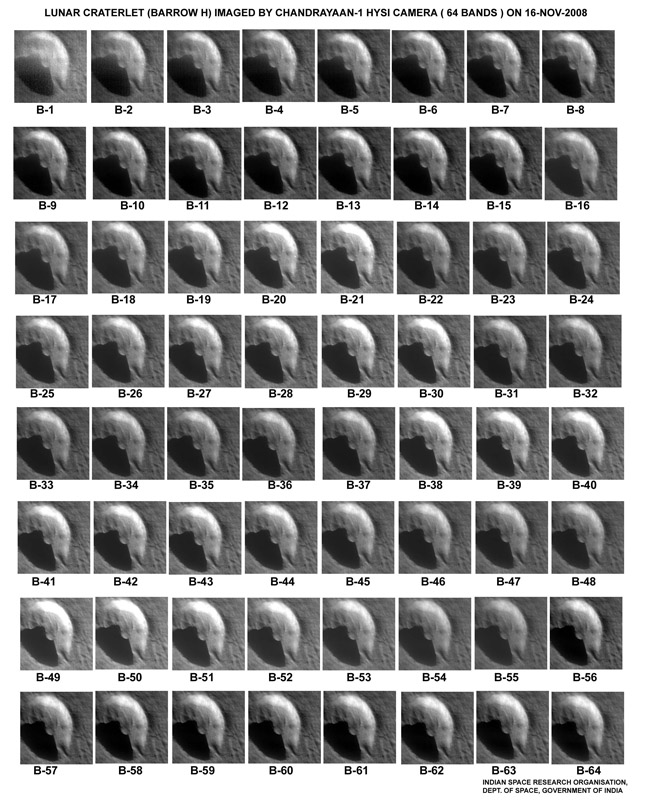December 4, 2008
Postage Stamps

image by Indian Space Research Organization
It may be necessary to explain what postage stamps are to younger readers of LPOD, but there was written communication before email and text messaging. Postage stamps are issued in sheets of 50 or so, to be torn off and used as needed to pay for the delivery of a letter. Quaint. These 64 views of the crater Barrow H (diameter 5 km) from the Indian Chandrayaan-1 lunar orbiter aren't postage stamps because each image is slightly different. Modern remote sensing instruments commonly collect images in many separate narrow wavelength bands making what is generally called an image cube - imagine the first image here (B1) with each of the 63 others stacked behind it. Collection of so much data allows creation of detailed spectra for any pixel on the image. Additionally, any 3 images can be combined - as red, green and blue inputs - to create a color image where the colors represent reflectivity in the 3 wavelength bands. Skilled amateurs often use 3 color imaging to create spectacular colored views of Mars and Jupiter. Chandrayaan-1 carries a Hyper Spectral Imager (HySI) camera that acquires images in 64 different wavelengths between 0.4-0.95 µm with a spectral resolution of 15 nm, ground resolution of 80 m, and a swath width of 20 km. I haven't yet found a listing of wavelengths corresponding to each filter, but it appears that B1 and nearby images are in the ultraviolet portion of the spectrum and B64 is out at the near infra-red end. You can make your own colored images by cutting out any 3 - preferably widely spaced - images and combining them in Photoshop, Image J or other image processing software. Have fun exploring these new data!
Chuck Wood
Related Links
Rükl plate 4
Yesterday's LPOD: Excellent Taruntius
Tomorrow's LPOD: Edges of Uplift
COMMENTS?
Register, Log in, and join in the comments.



